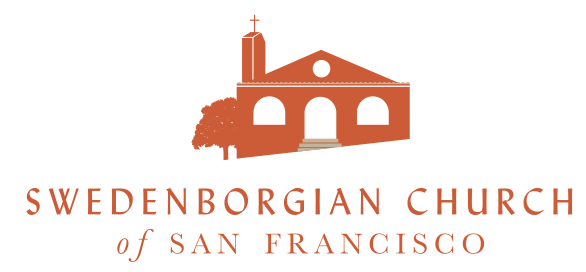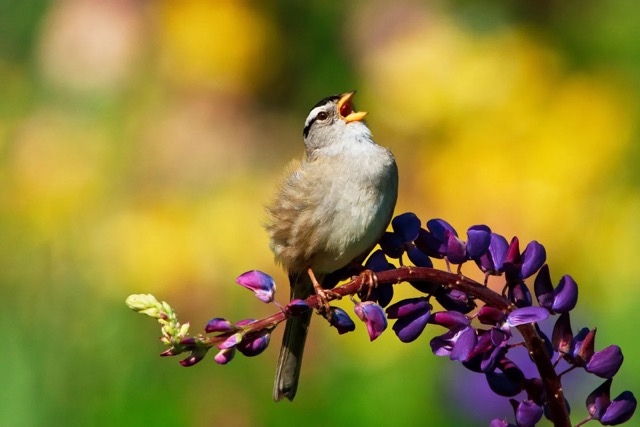Greetings to the church community, friends near and far, as I enter my third week of service to this special group of people and our sacred space in Pacific Heights. As I sit in the office on the second floor of the parish house with the windows open, I have come to deeply savor the regular sound the white-crowned sparrow, which often accompanies me as I work (a song infrequently cut across by the noisy, loud chattering of a flock of green parrots). Where I live in the East Bay hills, in Berkeley, the white crowned sparrow is not so common, and its haunting whistling song always reminds of being near the coast and the water, and quite a few happy beach and surfing memories at Stinson and Bolinas.
Across most of North America, the white crowned sparrow is only a seasonal visitor, though there are some subspecies which choose to spend their entire year here, in the temperate seasons of our Bay. Most migrate far north to the Arctic circle to breed and raise their young. When I hear this beautiful, fragile call from such a tiny bird, I am amazed to think of the thousands of miles this little feathered traveler has potentially traversed. White crowned sparrows are able to half-sleep as they fly—shutting down half of their brains as they move through the air—allowing them to spend incredible lengths of time in the air, over hundreds of miles, without once taking a rest.
In Emanuel Swedenborg’s theory of correspondences—his so-called “science” for the spiritual valences of nature—birds represent intellectual and spiritual things we can perceive with our minds: truths, in other words, which can take us places. In the Irish writer James Joyce’s wonderful novel Portrait of the Artist as a Young Man (first published in 1916), the main character Stephen Daedelus stands on the steps of Trinity College Library, in Dublin, and gazes at the seabirds soaring above him. Stephen wonders how “there then flew hither and thither shapeless thoughts from Swedenborg on the correspondence of birds to things of the intellect and of how the creatures of the air have their knowledge and know their times and seasons because they, unlike man, are in the order of their life and have not perverted that order by reason.”
What ideas have taken you on incredible journeys, across vast distances, in spite of their diminutive size or appearance? When you listen to birdsong, what spiritual concepts might you discern?
See you Sunday,
Reverend Devin

